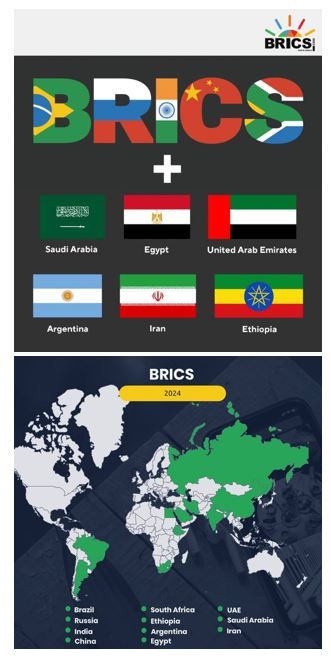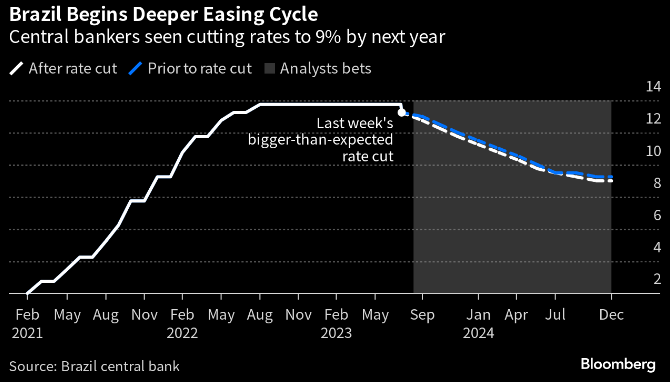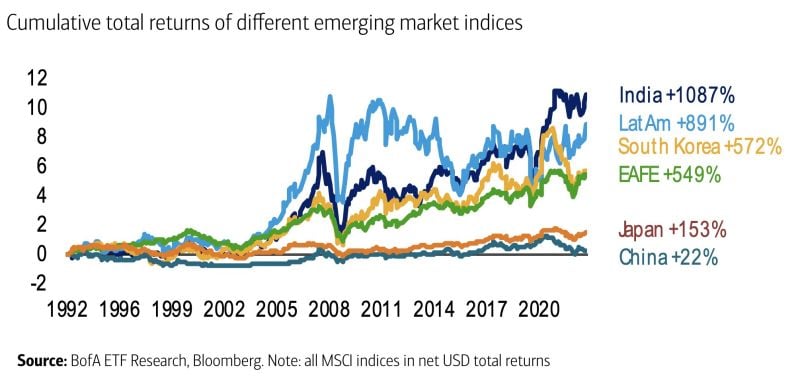Straight from the Desk
Syz the moment
Live feeds, charts, breaking stories, all day long.
- All
- equities
- United States
- Macroeconomics
- Food for Thoughts
- markets
- Central banks
- Fixed Income
- bitcoin
- Asia
- europe
- investing
- technical analysis
- geopolitics
- gold
- Crypto
- AI
- Commodities
- Technology
- nvidia
- ETF
- earnings
- Forex
- china
- Real Estate
- banking
- oil
- Volatility
- energy
- magnificent-7
- apple
- Alternatives
- emerging-markets
- switzerland
- tesla
- United Kingdom
- Middle East
- assetmanagement
- amazon
- russia
- ethereum
- microsoft
- ESG
- meta
- Industrial-production
- bankruptcy
- Healthcare
- Turkey
- Global Markets Outlook
- africa
- Market Outlook
- brics
- performance
EM Middle East Sovereign Bonds Impacted by the Israeli-Palestinian Conflict
Since the commencement of the Israel-Palestine conflict, the 5-year CDS (Credit Default Swap) for Middle East sovereign bonds has experienced a significant surge. 📈 Notably, the market's response doesn't reflect heightened concern. This is evident as US equities have continued to climb since the conflict's onset, while interest rates have surged back to previous highs. 📈📊 Thus far, the impact has primarily reverberated in the commodities market, with fluctuations affecting oil and gold prices. Additionally, the Middle East sovereign countries in the EM (Emerging Markets) segment have also felt the repercussions. 🛢️💰 Is the market right to be this complacent in the face of ongoing geopolitical tensions?
Emerging market stocks have fallen to their lowest valuation relative to the S&P 500 in AT LEAST 36 years
Source: Barchart, Bloomberg
A tweet by Robin Brooks: "Brazil's trade surplus remains in the stratosphere
There is no other EM that has transformed itself over the past decade in the way that Brazil has. The sharp rise in US interest rates is currently weighing on Real, but that's temporary. The massive trade surplus is permanent..."
The BRICS economic coalition of emerging markets has decided to extend membership invitations to six nations.
The BRICS alliance — which presently reunites Brazil, Russia, India, China and South Africa — is set to invite Argentina, Egypt, Ethiopia, Iran, Saudi Arabia and the United Arab Emirates to join, Ramaphosa said in a speech published on the X social media platform, previously known as Twitter. The new composition of BRICS will control 80% of world oil production. The same goes for the sharp GDP growth of the new BRICS countries. It will amount to 30% of world GDP and exceed $30 trillion. Source: Sprinter, MoneyRadar
Brazil central bank says faster key rate cuts are Unlikely
“The Committee judges that there is low probability of an additional intensification in the pace of adjustment,” central bankers wrote in the minutes of their Aug. 1-2 meeting published on Tuesday.
Source: Brazil Central Bank, Bloomberg
EM returns over past 5-10yrs have been lackluster, w/most EM equities returning low-to-mid single digits
Over longer-term, returns range from extraordinary (India: 1000%) to respectable (Indonesia: 469%) despite volatility & some prolonged periods of choppy trading, BofA has calculated. All EMs have outperformed China's 22% total return. Source: HolgerZ, BofA, Bloomberg
Tavi Costa: "Brazilian equities have been attracting unprecedented levels of foreign capital investments, marking a fundamental shift since the global financial crisis
Net inflows from international investors over the past 50 days have reached historically elevated levels, maintaining a consistent upward trajectory over the last two years". Source: Tavi Costa, Bloomberg
Banco Central do Brazil Surprises with a Larger-than-Expected Rate Cut!
Following the surprising rate cut by 100bps from Chile's Central Bank earlier this week, Banco Central do Brasil (BCB) has also made an unexpected move by announcing a rate cut of 50bps, surpassing market expectations of 25bps. The BCB President, Roberto Campos Neto, reduced the Selic to 13.25% yesterday, with a split decision among board members, four of whom voted for a smaller quarter-point cut. In a related statement, policymakers emphasized the improved consumer price outlook and the decline in longer-term inflation expectations. With Brazil's recent rating upgrade and positive progress in inflation, the country appears well-positioned to continue its path of prudent monetary policy decisions. Could we expect similar rate cuts from Peru and Mexico in the region? In any case, just as at the beginning of the tightening cycle, Latin American central banks are once again ahead of their developed counterparts. Source : Bloomberg.
Investing with intelligence
Our latest research, commentary and market outlooks









